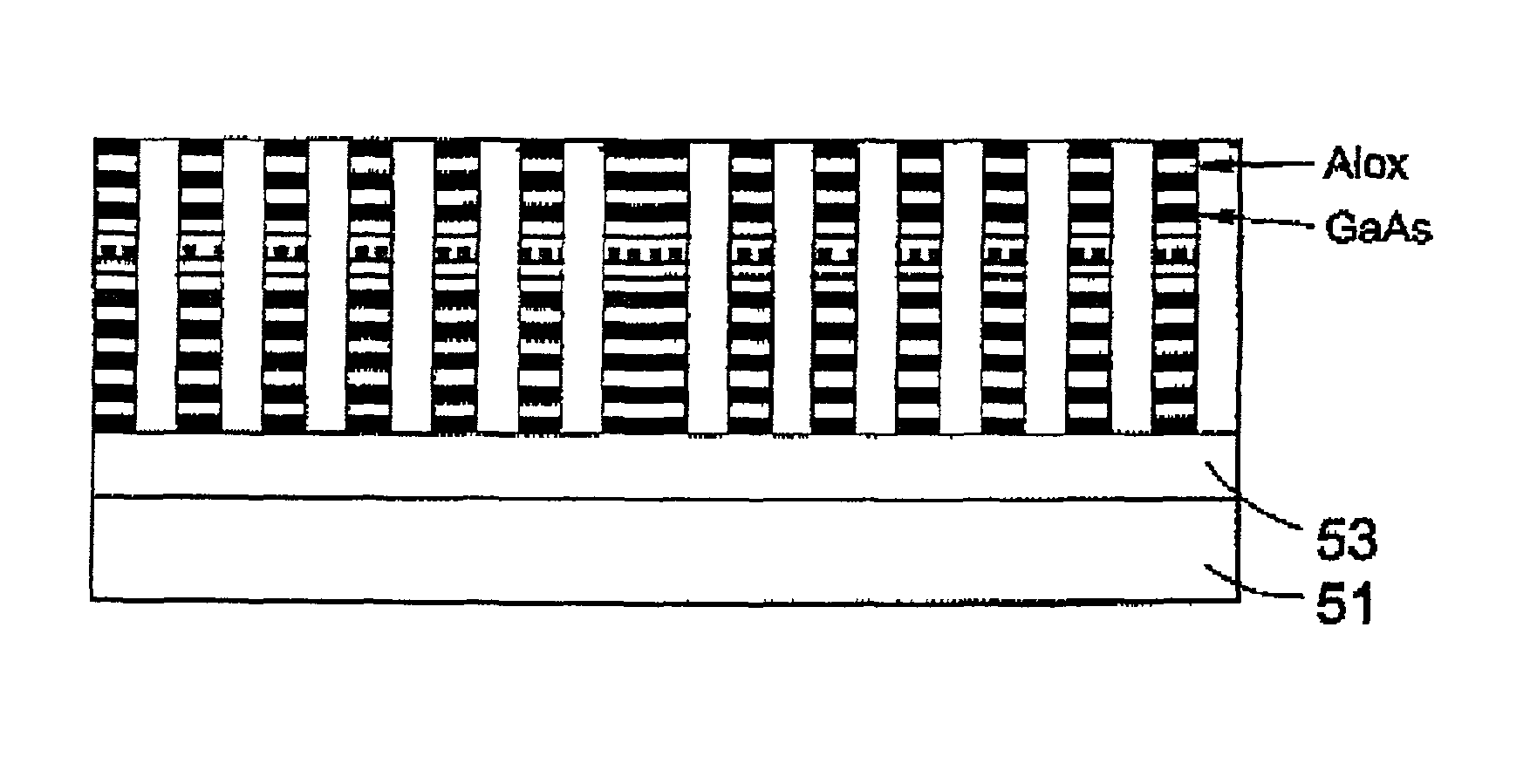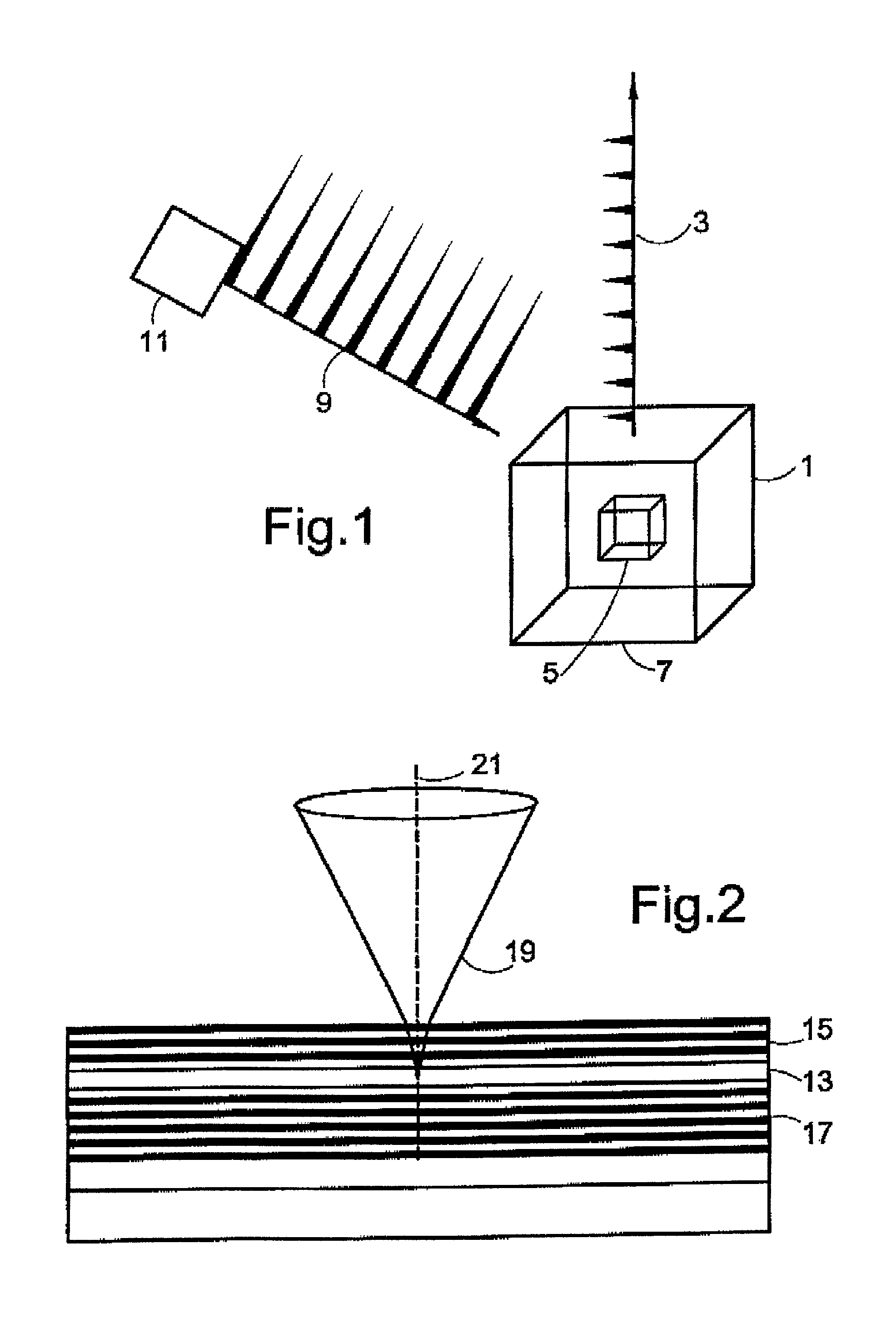Optical device capable of emitting photons and method for its manufacture
- Summary
- Abstract
- Description
- Claims
- Application Information
AI Technical Summary
Benefits of technology
Problems solved by technology
Method used
Image
Examples
Embodiment Construction
[0096]FIG. 1 shows a schematic of a single-photon emitter 1 directing its output in a predetermined direction 3. The optical source comprises a quantum dot 5 which is located within a three-dimensional mirror cavity 7.
[0097]The quantum dot 5 is configured to emit a stream of regularly spaced single photons or emit pulses of multiple photons in response to irradiation by pulsed beam 9 from pulsed laser diode 11. An example of how this is achieved will be described with reference to FIG. 6. In the absence of an optical cavity, the quantum dot 5 will irradiate isotropically. Therefore, only a small amount of the radiation will be emitted in direction 3. However, use of the three dimensional mirror cavity 7 allows the radiation emitted by quantum dot 5 to be directed in predetermined direction 3. This radiation can be efficiently collected by a fibre optic cable, or the optic.
[0098]FIG. 2 shows a one-dimensional cavity. The cavity 13 is defined by an upper Bragg mirror 15 and a lower Br...
PUM
 Login to View More
Login to View More Abstract
Description
Claims
Application Information
 Login to View More
Login to View More - R&D
- Intellectual Property
- Life Sciences
- Materials
- Tech Scout
- Unparalleled Data Quality
- Higher Quality Content
- 60% Fewer Hallucinations
Browse by: Latest US Patents, China's latest patents, Technical Efficacy Thesaurus, Application Domain, Technology Topic, Popular Technical Reports.
© 2025 PatSnap. All rights reserved.Legal|Privacy policy|Modern Slavery Act Transparency Statement|Sitemap|About US| Contact US: help@patsnap.com



